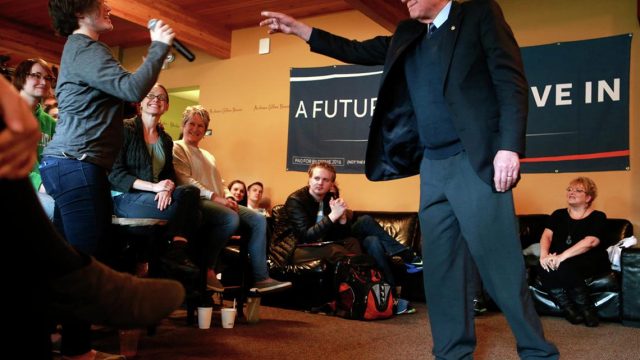The Bernie Sanders Plan to Eliminate Student Debt Is Hardly a Free Lunch

There’s no such thing as a free lunch. It’s an undeniable truth. Somebody always has to pay.
The Bernie Sanders plan for eliminating the roughly $1.6 trillion in student loan debt some 45 million Americans are carrying is no exception to the rule. “At a Capitol Hill news conference, Sanders unveiled the plan to eliminate all of the $1.6 trillion of student loan debt in the U.S. held by 45 million Americans,” ABC News reports today. “The plan would include all private and graduate school loan debt and would apply to all persons regardless of income.”
Where does the money come from? A tax on “Wall Street speculation,” says Sanders:
This student loan forgiveness component of the plan is coupled with a larger initiative to make all public universities, community colleges, and trade schools tuition-free, which would also be paid for by the new set of taxes on Wall Street, including a 0.5% tax on stock trades and a 0.1 percent tax on bonds.
Promising a broad swath of the electorate some valuable thing paid for by a smaller, unsympathetic portion of the electorate is a solid, if cynical, political strategy. Sanders, the preferred candidate of North Dakota Democrats during the 2016 election cycle, is telling tens of millions of Americans that he’ll eliminate the debt they signed up for, and he’ll make those evil crooks on Wall Street pay for it.
Only, it’s not really Wall Street who would pay. That tax on bonds and stock trades is an expense which is going to be passed on to people who trade in stocks and bonds. Which is pretty much all of us, given the ubiquity of investing these days.
Everyone from day traders to retirees with an IRA or a 401k would pay for this one way or another.
Only in a manner that’s far less efficient, because now the government will have to administer this tax and the flow of its revenues toward paying for higher education. Consider this from the Tax Foundation:
…an individual might sell a stock worth $100 to diversify her portfolio and then purchase stock in a new company with that same $100. The $100 is being taxed twice: first, when the individual sells the stock, and then again when the money is used to buy the new security. Imagine this happening thousands of times a day. The tax pyramiding quickly adds up.
Sweden imposed a tax on financial transactions back in the 1980’s. The end result was declining revenues as trading moved to other markets to avoid the taxes. The tax Sanders would impose to pay for this would collect less revenue over time even as the economy took a hit as these transactions moved out of our market.
Ironically, a weakened economy would mean fewer opportunities for the very students Sanders says he’s trying to help.
What’s more, there will be a disconnect between those who are getting the service (the students) and the cost of that service.
The government has already turned student loans into a sort of entitlement – anyone who wants one can get one – and the net result of that disconnect has been $1.6 trillion in student loan debt and soaring higher education costs. Colleges can get away with obscene rates of growth in tuition and fees, and students are inured to the debt they’re accumulating because the government is promoting easy money lending for student loans.
Do we really want even more distance between students and the realities of financing higher education?
What Sanders is selling a fantasy. If he got his way it would make things worse, not better.




